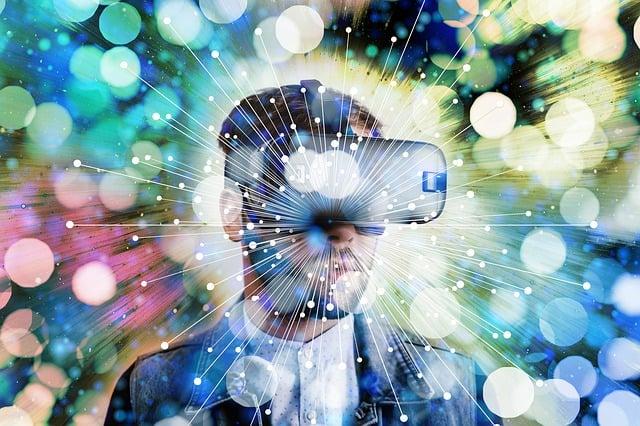- Introduction
- How Does RecycleAR Work?
- The Role of Augmented Reality in Recycling
- Key Benefits of Using RecycleAR
- The Future Impact of RecycleAR Innovation
- Conclusion
- FAQs
Introduction
Technology is rapidly transforming industries, and sustainability sees no exception to this trend. In this blog post, we will explore RecycleAR, a notable innovation in the field of recycling powered by Augmented Reality (AR). This novel technology aims to improve recycling habits while educating individuals and corporations about proper waste management practices. Through this article, we’ll break down how RecycleAR works, AR's role in solving recycling challenges, the benefits of using the platform, and its potential lasting impact on our planet.
The use of AR allows RecycleAR to enhance user experiences as it makes waste sorting more convenient and engaging. We will also delve into future possibilities for the widespread adoption of this exciting technology.
How Does RecycleAR Work?

(Image: Pixabay/@neelam279)
At its core, RecycleAR leverages sophisticated AR technology through smartphone applications or smart glasses to provide interactive information about the disposal and recycling of waste items. Users simply scan an object with their device, and RecycleAR provides real-time data on whether the item is recyclable, what category it belongs to (such as plastic, glass, or paper), and how and where to dispose of it properly.
This detailed and instant feedback helps eliminate any confusion regarding recycling, making it accessible even to those who feel less knowledgeable on the subject matter. The integration of AR accelerates the learning process and creates a more intuitive solution for end users.
Moreover, RecycleAR apps frequently integrate map-based features, which help users locate nearby recycling centers or eco-friendly disposal spots, fostering better participation in sustainable waste management practices.
The Role of Augmented Reality in Recycling

(Image: Pixabay/@geralt)
Augmented Reality adds considerable value to existing recycling processes by bridging the gap between real-world objects and digital knowledge resources. Imagine the scenario: you're unsure if that plastic yogurt container can be recycled, so you take out your phone, open the RecycleAR app, scan the container, and within seconds, you're provided with all the information you need for proper disposal.
Besides assisting individuals, many businesses and municipalities are turning to AR-based solutions like RecycleAR to streamline industrial recycling efforts. For example, waste management facilities can train their staff via AR-guided instruction manuals, supporting the efficient sorting and transportation of recyclable materials.
Overall, AR reduces human error in recycling, heightening overall efficiency and optimizing sustainability efforts across small and large scales.
Key Benefits of Using RecycleAR

(Image: Pixabay/@klimkin)
The adoption of RecycleAR brings several key advantages both for individuals and larger ecological systems:
1. Increased Awareness: RecycleAR not only helps people take action but educates them in the process. By providing real-time information about various products, users learn which items should be recycled and why.
2. Convenience: There’s no need to remember complex local regulations when AR can guide you accurately on the spot. This reduces the time people would otherwise spend searching for recycling-related information online or offline.
3. Reduces Contamination: Incorrectly sorted waste can contaminate recycling batches, rendering much of it unusable. By ensuring the right materials go to the right place, RecycleAR contributes to purer recycling streams.
4. Engaging User Experience: AR applications gamify the recycling process, making it rewarding and fun. Leaderboards, badges, and competitive elements can motivate more frequent user engagement in eco-friendly practices.
The Future Impact of RecycleAR Innovation

(Image: Pixabay/@TheDigitalArtist)
RecycleAR marks a significant milestone in merging digital technologies with environmental conservation. As more people adopt AR-enabled apps for everyday tasks, it's anticipated that waste sorting problems will reduce globally, allowing for more efficient and cleaner recycling systems. Cities of the future could see AR technology integrated into smart bins that automatically sort waste, reducing the need for human intervention.
Additionally, adopting RecycleAR can pave the way for governments and organizations to redefine their recycling strategies. The data collected from these platforms can provide valuable insights into the types of waste generated, helping authorities create adaptive waste management regulations.
Looking ahead, RecycleAR could evolve further by integrating with artificial intelligence (AI) to predict user behavior and offer personalized waste management suggestions, improving how communities control local environmental impacts.
Conclusion
RecycleAR is more than just an app—it's an educational and operational gateway to improved global recycling practices. By harnessing the power of Augmented Reality, this tool simplifies recycling and fosters greater participation. Whether you're an individual looking to reduce your carbon footprint or a city hoping to strengthen its waste management strategies, RecycleAR offers tangible, thought-leading innovations.
As AR continues to advance, we may soon witness revolutionary transformations throughout the recycling and waste management sectors to increase efficiency, raise awareness, and facilitate planet-friendly solutions.
FAQs
What is RecycleAR?
RecycleAR is an Augmented Reality-powered application that helps users identify and sort recyclable materials instantly by scanning real-world objects with a smartphone or AR device.
How do I get started with RecycleAR?
You can download the RecycleAR app from your smartphone’s app store, after which you can immediately start scanning items to determine their recyclability.
Can businesses benefit from using RecycleAR?
Yes, businesses can optimize their recycling processes by integrating RecycleAR, enabling staff training and offering real-time, accurate sorting methods. It significantly reduces human error in waste management systems.
Is RecycleAR compatible with any recycling system?
RecycleAR is designed to integrate seamlessly with most recycling infrastructures, providing accurate guidelines towards various existing local recycling protocols.

